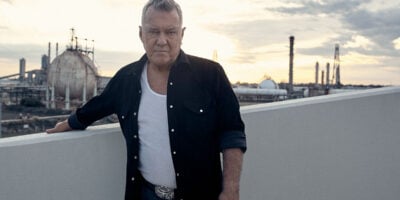There have been a lot of forces at work that have shaped the music industry in recent years, but few have been as potent and all-encompassing as the advent of social media.
Permeating every facet of the industry, not to mention our lives, it’s something we all feel pretty familiar with – but at the same time it can be ever-changing, unpredictable and impossible to figure out.
For some insight into how social media has changed the landscape of music promotion, and how best to use it to push your band, music and your gigs, we’ve had a chat with someone who knows as well as anyone what makes social media tick – and how to get the most out of it.
 Erin Lyall is an online marketing and social media expert who worked for the iconic Melbourne venue The Corner Hotel for over five years, as well as the Northcote Social Club and Newtown Social Club, before moving to live music and events company The Venue Collective.
Erin Lyall is an online marketing and social media expert who worked for the iconic Melbourne venue The Corner Hotel for over five years, as well as the Northcote Social Club and Newtown Social Club, before moving to live music and events company The Venue Collective.
Now, with a wealth of experience under her belt, Erin is starting up her own freelance business, taking her live music and social media expertise into a variety of creative projects. If you could use some help with your online presence, get in touch with Erin here.
For more help with promoting your event, Eventbrite have a free guide available online with nine simple steps to mastering social media.
The Big Shift
Having started out in the world of corporate communications before working with names like The Brian Jonestown Massacre and The Corner Hotel, Erin has witnessed firsthand the massive shift that’s come about as a result of social media, not to mention just how much social media itself has morphed along the way.
“It’s been huge,” she tells us. “When I first started there weren’t many businesses utilising social media. It was a big unknown. It very quickly became apparent how useful a tool it can be if it’s used properly.
“Social media itself has changed significantly in the last six years, but we initially found that as our following grew, we were able to sell out multiple shows at the one venue because the buzz just continued to build.”
Of course, after an all-too-brief boom period where anything seemed possible, social media boomed in popularity and began to monetise, becoming the competitive marketplace we know today. It’s a constant challenge, but when you’re able to cut through the noise, social media is still one of the single most powerful tools you can have up your sleeve.
“It became more challenging as Facebook in particular started tweaking its algorithm and there was more competition in that space, but at the same time if you can stay ahead of those changes and figure out how to break through the noise, it can still be really useful. When we started to see local bands selling out multiple nights at some of our venues, thanks in part to the buzz generated by our social promo, that was really rewarding.
“It can be harder to sell a lot of tickets fast to one big venue, so these emerging artists were all of a sudden selling thousands of tickets in a matter of days. It was really nice to play a very small part in that success, both for the artists and the venues.
“Building our Facebook following to over 100,000 followers in just a few years, and the email database at a similar rate, was a pretty proud achievement too.”
Know Your Audience
While we all know how to throw up a quick post and snare a like or two, there’s a lot that goes into effectively managing a social media presence, keeping people engaged and hopefully bringing them to your shows. According to Bree, there are several key mistakes that cause potential audiences to tune out.
“I think a lot of people struggle with balancing straight up publicity or advertising and remembering to be authentic and use it as a tool to connect with your fans,” she says. “If it’s used purely as an advertising tool, people tune out.
“The most important thing is for people to understand their fans or audience and have some two way communication with them. Play with it and have fun. People don’t want to be sold to all the time but if they connect with you on a real level then of course they’ll want to go to your shows or buy your merch, because they identify with you.”
Understanding your potential audience beyond just the number of likes and followers you already have is fundamental to converting your social media masses into punters in the front row. It’s important to work every angle you have available, and look into a range of tactics if you’re really hoping to maximise your efforts.
“It all comes down to the audience, and who you want to attend,” Erin believes. “Figuring out who is going to be interested in what you’re putting on is the first step. Then you have to figure out how to reach them, whether it’s through targeted ads, collaborations with key media outlets, record labels, artists, or through your own networks.”
“There are more platforms and they’re changing all the time, so it’s important to know where your audience is and where you should be investing the time. It’s incredibly important to have a strong email database alongside your socials, and to use the two to complement each other.”
Look At Every Option
With plenty of different social media options, it’s all about knowing your fans; who you’re most likely to be reaching through different platforms, and how best to interact with people through each one.
“It keeps coming back to understanding your audience in general,” Erin says, “and understanding each of the platforms’ strengths and weaknesses. Snapchat can be incredible for live events, and now you can pay a relatively small amount to have a geofilter on your location.
“It doesn’t necessarily help sell tickets for the event on the day, but if you’re running a festival or trying to generate buzz around a certain place or event, it can be priceless if people start using it.
“Of course, you need the people at that event to be the type of people who use Snapchat in the first place, which is where it comes back to understanding your audience. Facebook is still massive in the music space too, and Instagram is definitely relevant.
Outside of the more message-based platforms, exposure on streaming platforms, both on your own channel and on tastemaker channels and playlists, is becoming more important than ever – but don’t neglect the OG outlets either.
“Spotify playlists are huge,” Erin tells us. “If you can get a song onto one of the popular go-to playlists, that can generate massive exposure. Same goes for being featured on some of the key blogs (relevant to your audience) or YouTube channels. You can then leverage that exposure in the live touring space.”
“Socials have become a lot more technical too. There’s all sorts of pixel tracking going on in the background of websites, so having that kind of thing set up and ready to go before making an announcement can be really useful.”
Allowing you to keep track of how effective your ads are across a range of platforms, pixel-tracking may sound pretty advanced, but Eventbrite have simplified the process to make it easy for anyone to put it into action.
Enjoy The Challenge
While social media can often seem ridiculously opaque, it’s a beast that can be tamed with a bit of effort. Despite being built on ones and zeroes, Erin insists that there’s plenty of scope for creativity, and even a bit of fun.
“I wouldn’t say they’re impenetrable, but ever-changing, certainly. It used to frustrate me, but then I started treating it like a game. When you figure out how to hack it and get ahead of everyone else just posting whatever and hoping for the best, it can be a bit of a thrill. Then they change it again and you have to change tactic, but I guess that keeps it interesting.
“There needs to be structure and a plan, of course, but social does best when it’s used in the moment, too.”
And the single most important tip to keep in mind for anything you’re doing in the social media space?
“The number one thing is just be real,” Erin believes. “Despite the constant changes in social media best practice, authenticity is consistent.
“Try to avoid selling to your fans too much, and interact with them. Show them some behind-the-scenes stuff and let them in. The rest will follow.”

































